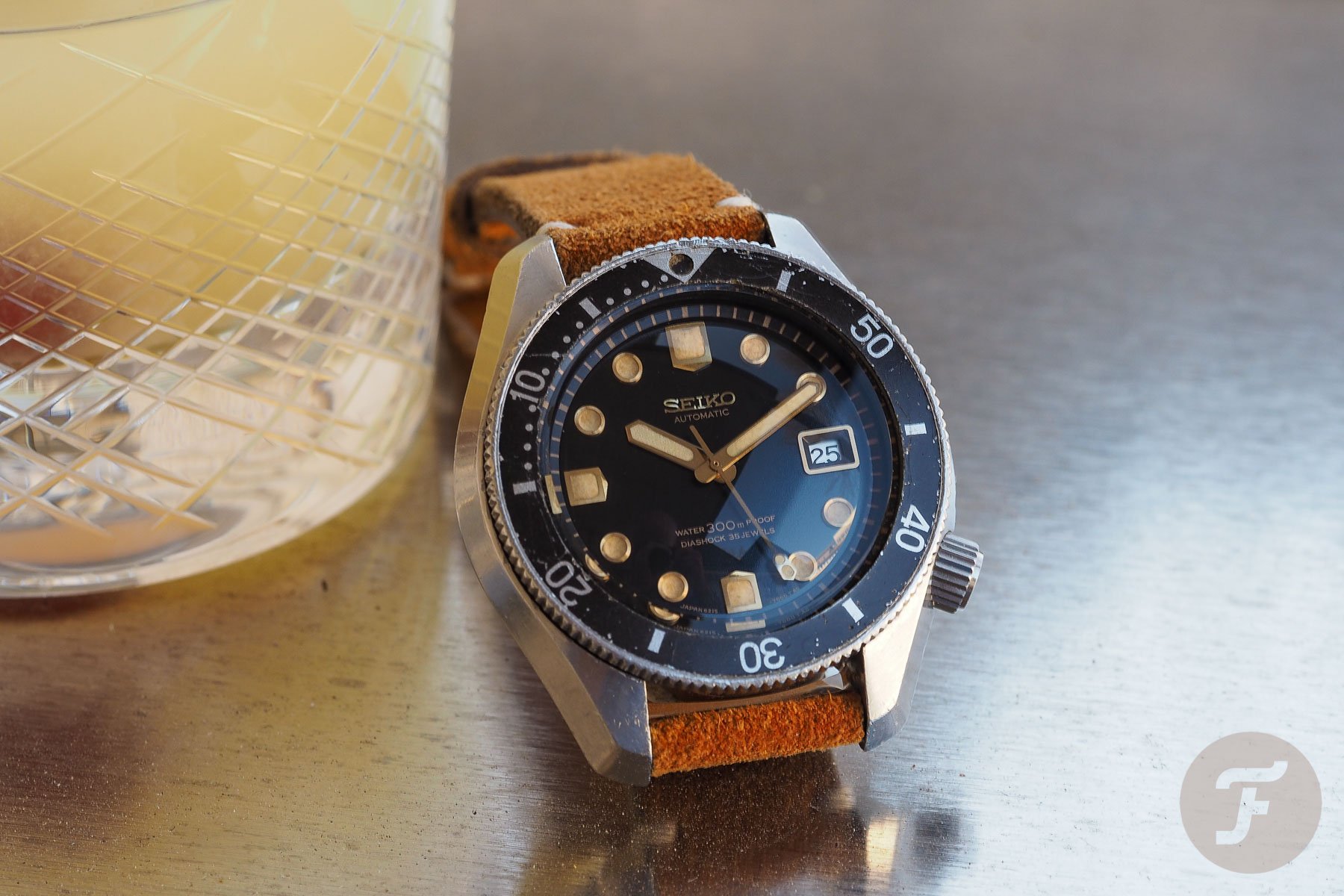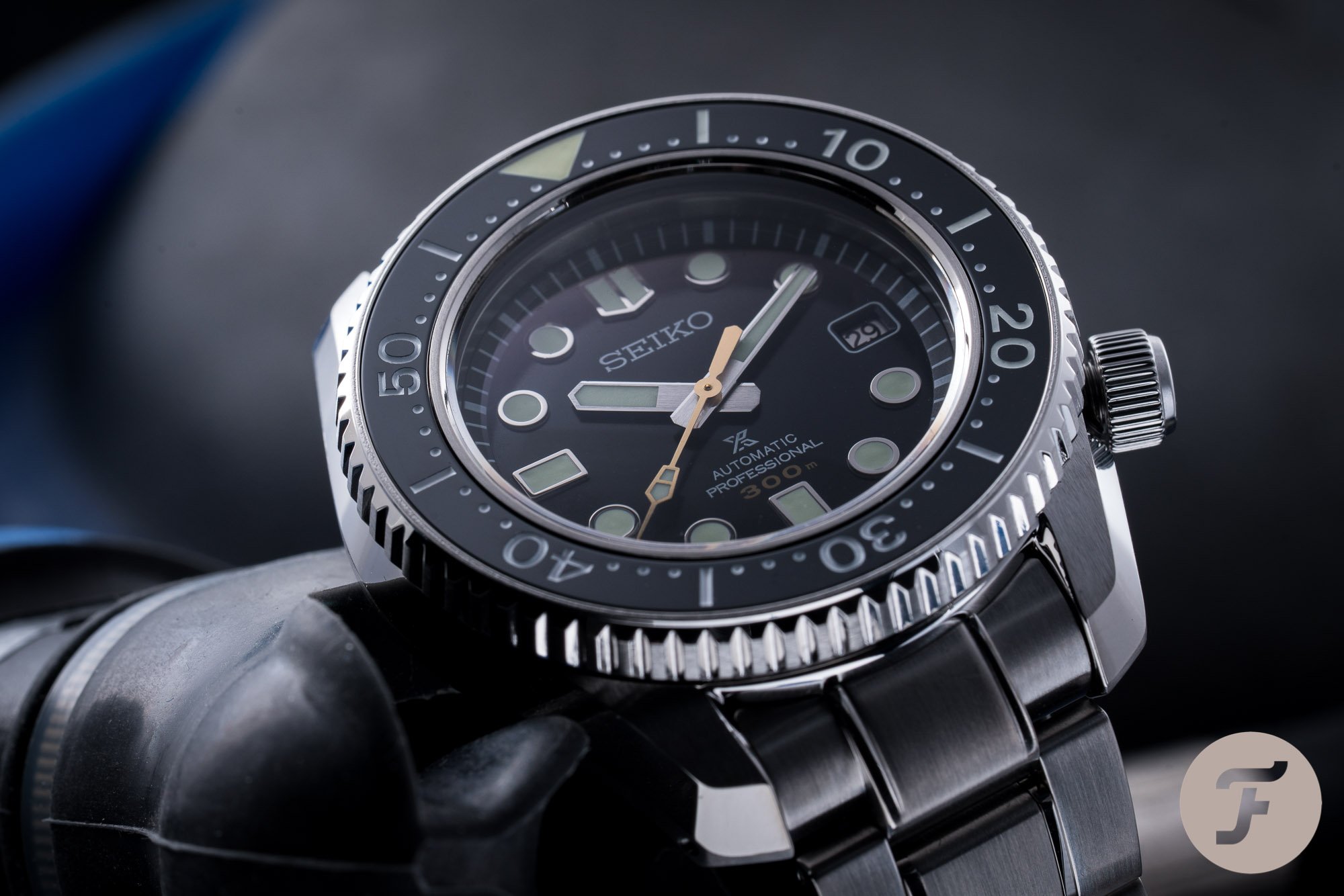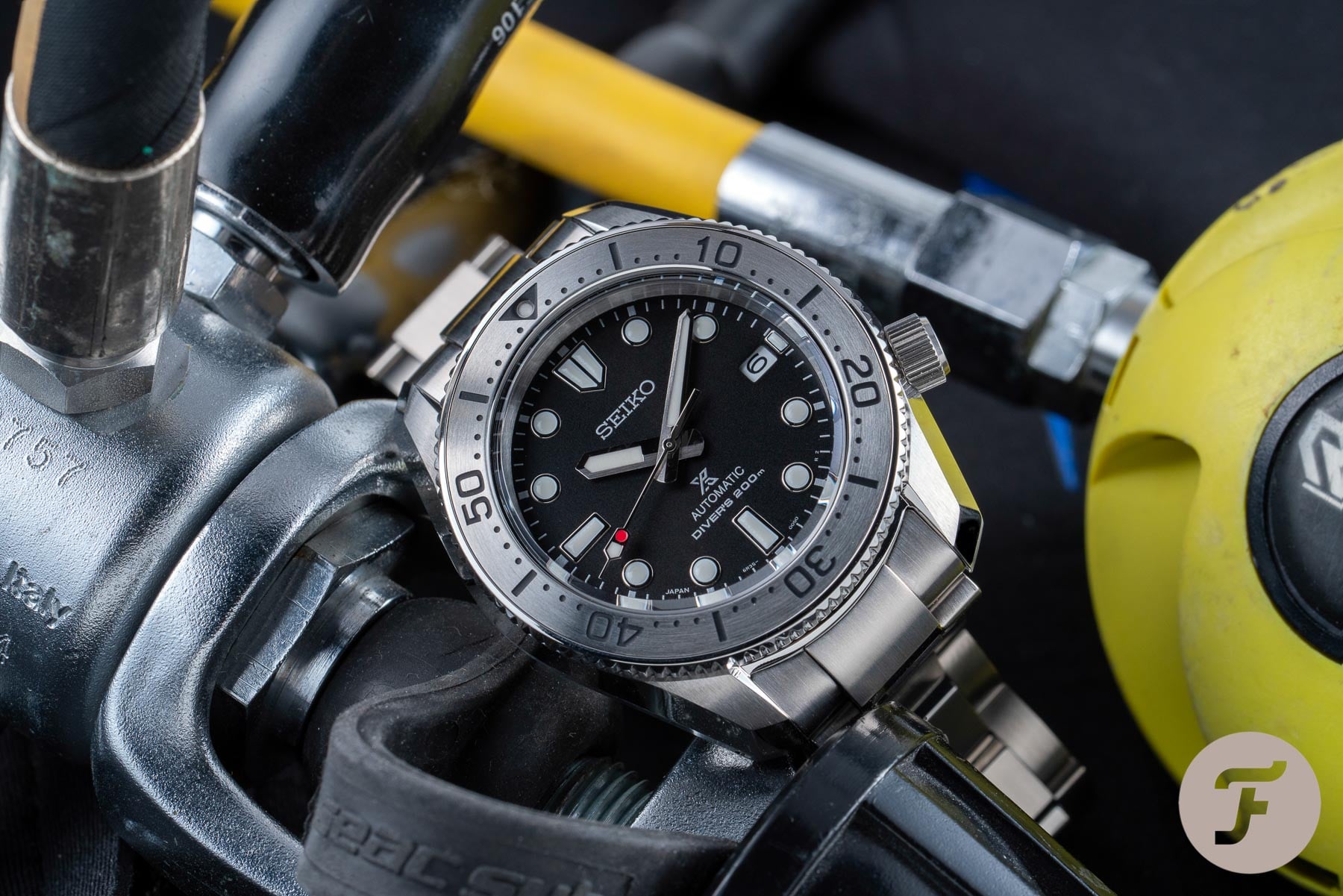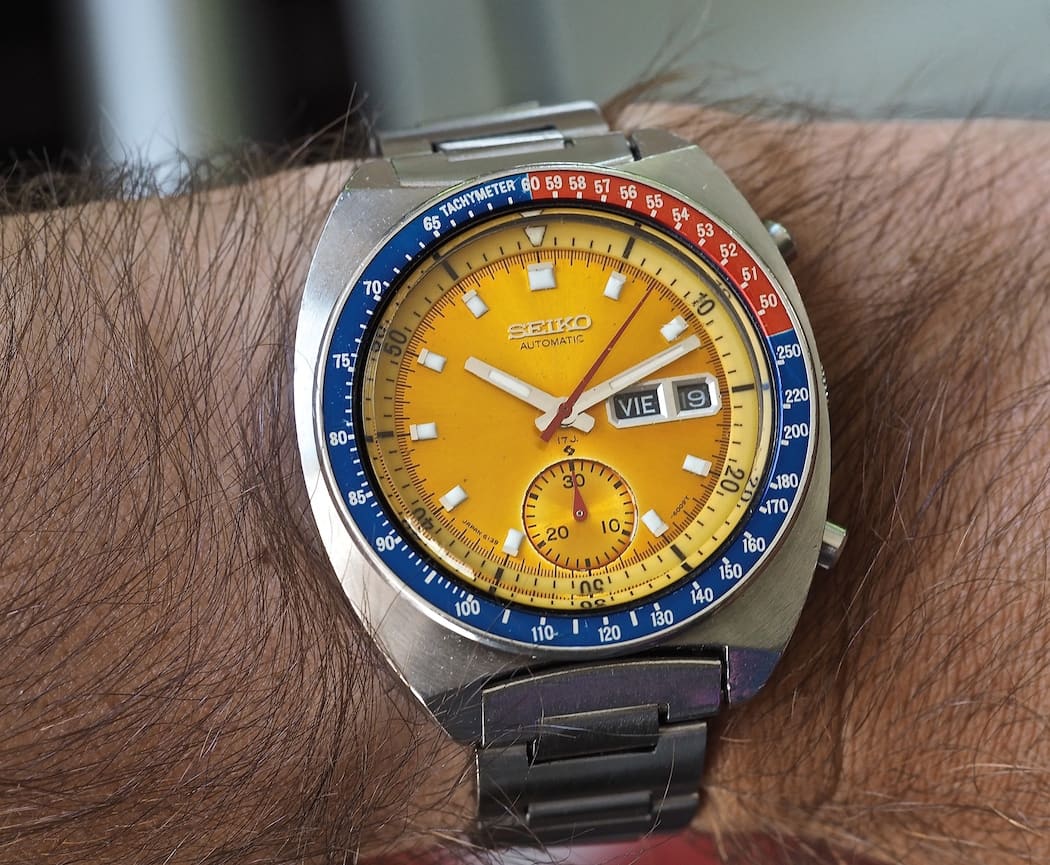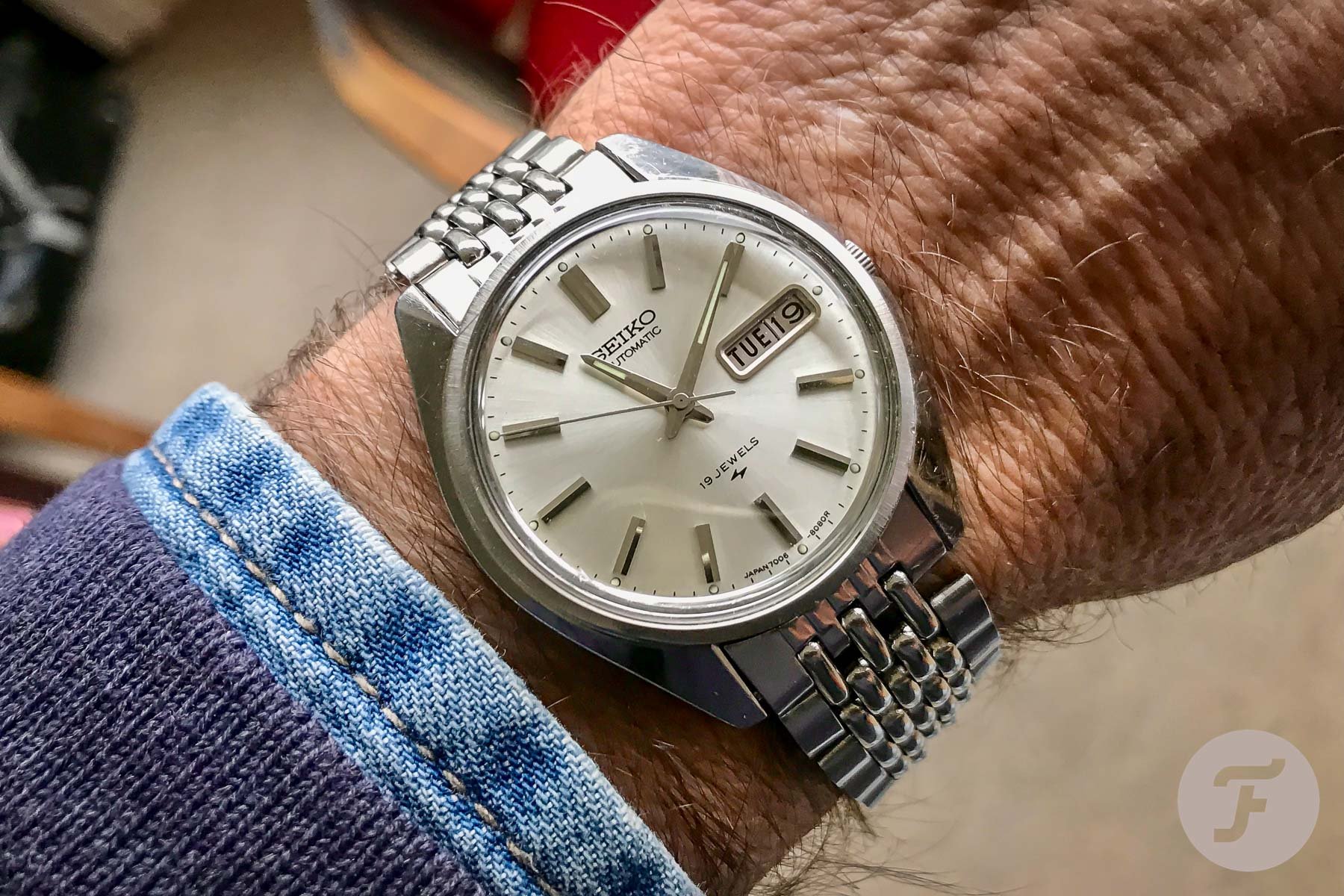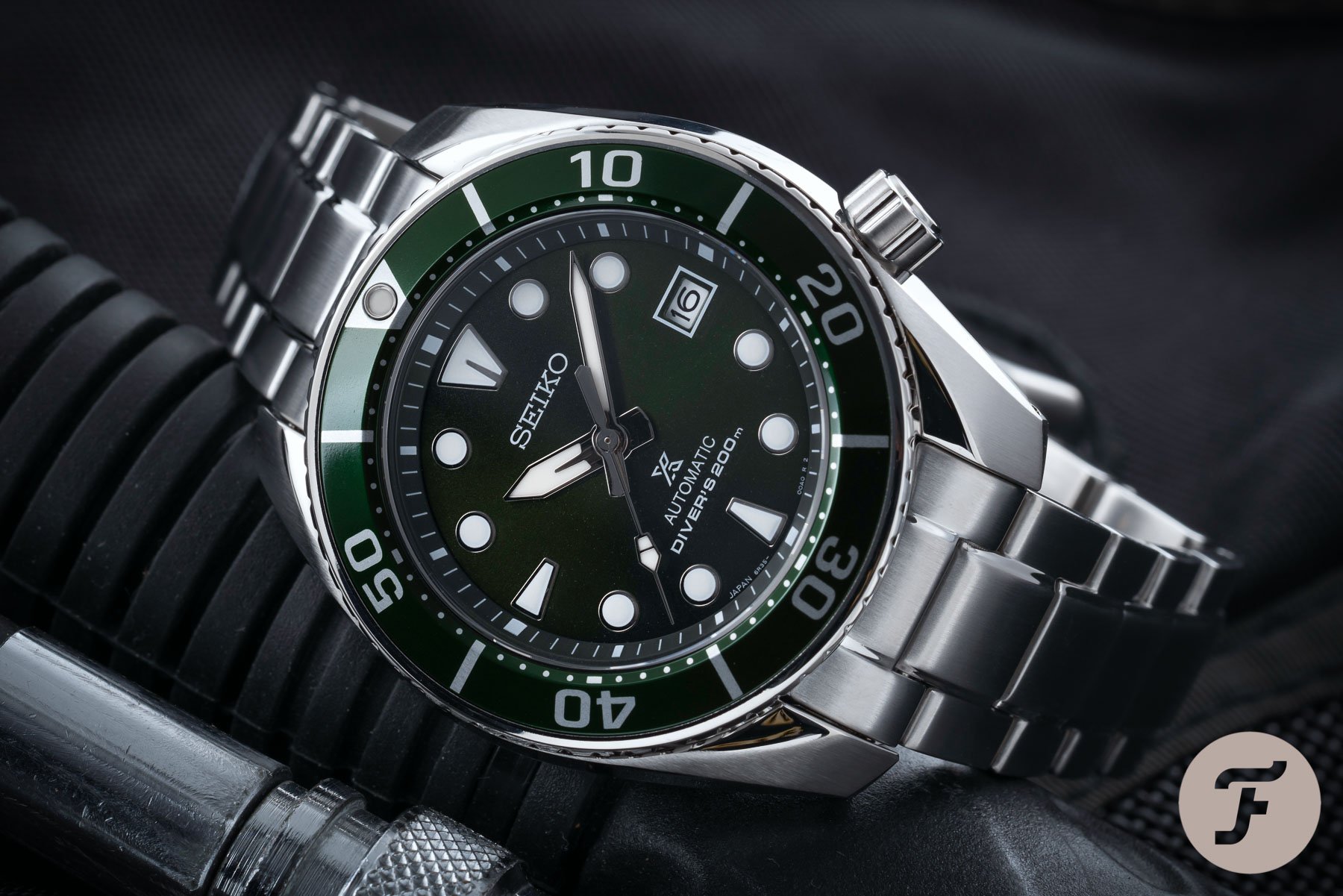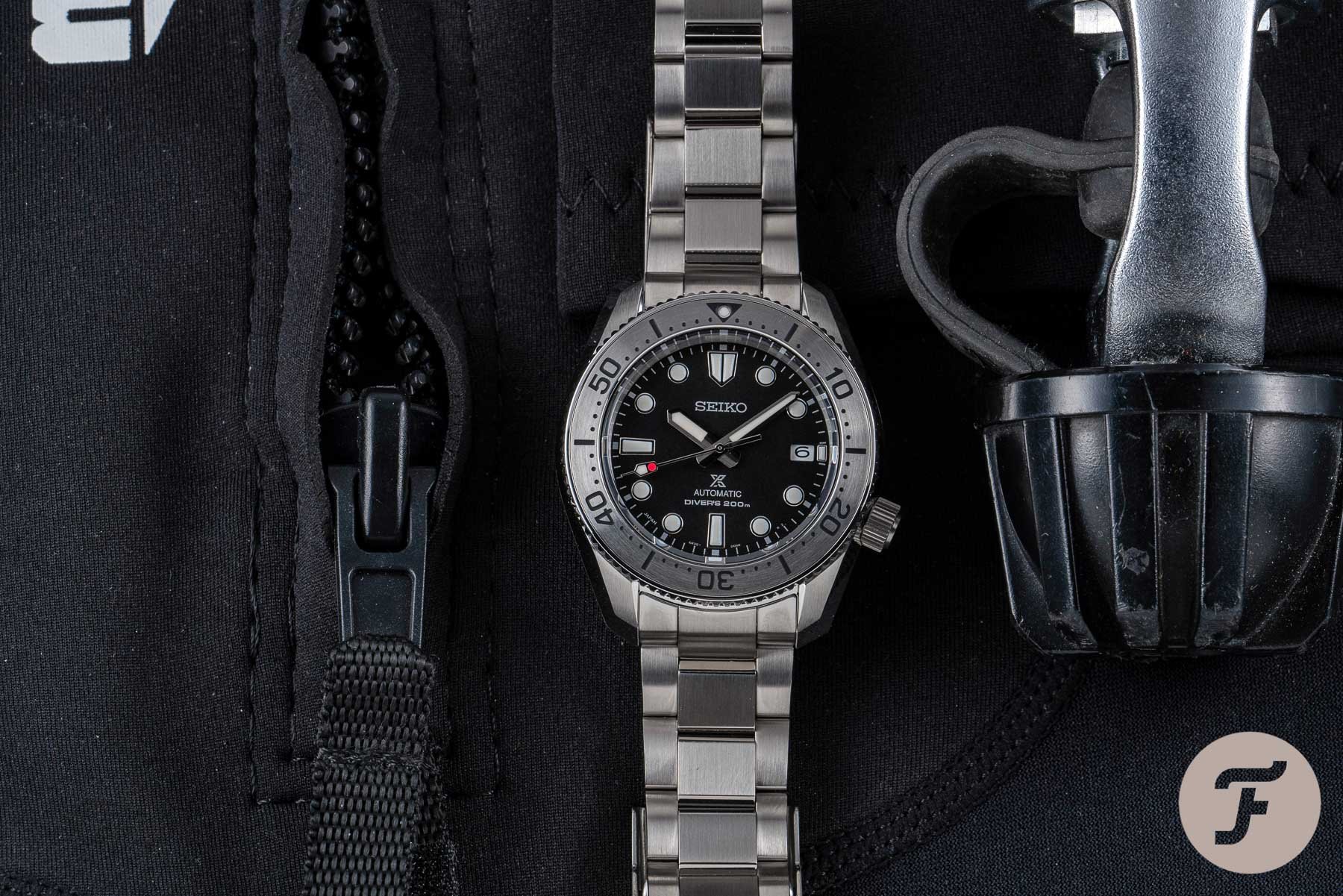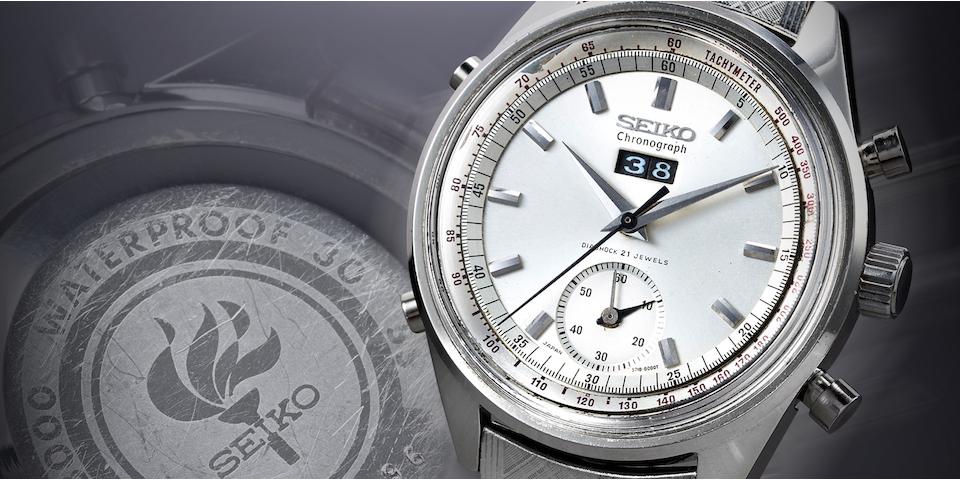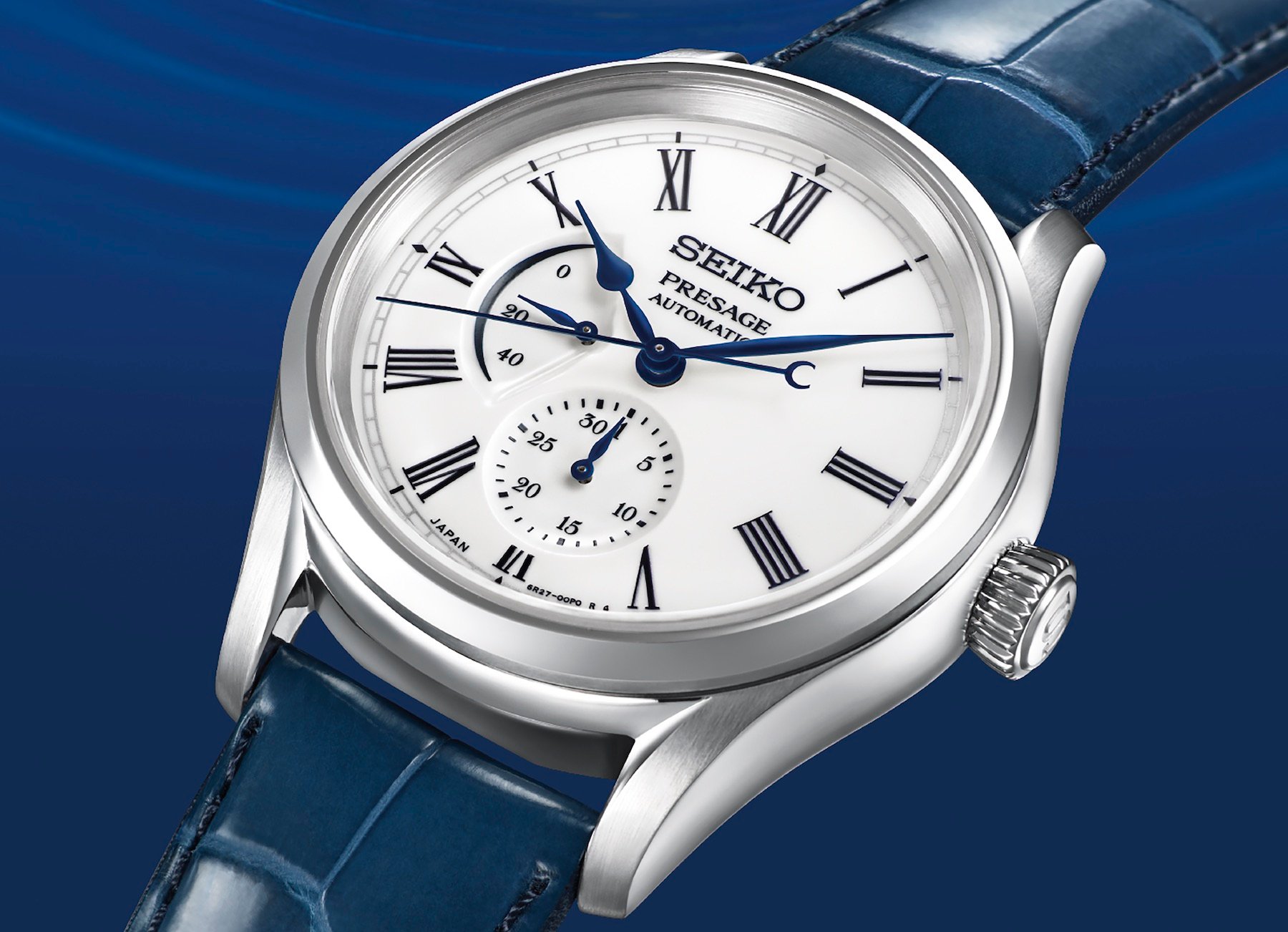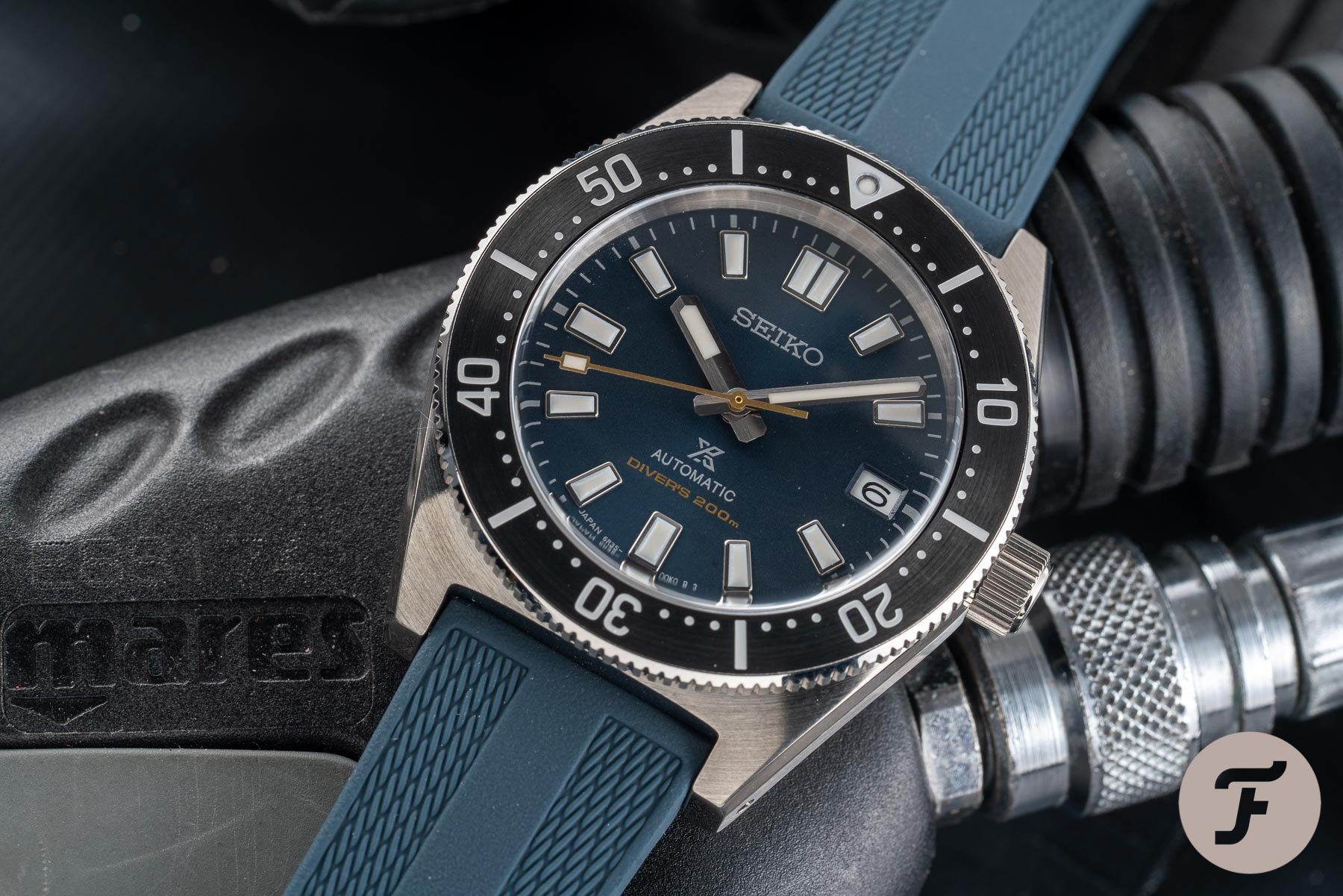The Seiko Watches That Our Fratello Editors Love — Marinemaster, Sumo, Pogue, And More
In these Covid-stricken times, there is nothing quite like chatting with friends. As such, we got together (virtually) to share our favorite Seiko watches. The question is, what would our writers spend their own money on? I posed the question with no budget restrictions. The choices could either be new or vintage — anything goes. Our editors got one choice and one choice only. Let’s find out what they picked…
Obviously, the first thing to ask yourself is where you stand on the new vs. vintage divide? Seiko is a brand with a great deal of history, making a deep dive into the brand’s history a great adventure. You will quickly learn that a lot of today’s collection is inspired by the classics of the past. That’s something that Seiko is well known for, actually. And with the 140th year of existence being celebrated this year, there is quite a bit to choose from, which makes for an even more interesting discussion.
Mike’s pick — Seiko 6215-7000
It’s only fair to have our resident Seiko expert make the first pick. Over the years, Mike covered a wide variety of new and vintage Seiko pieces. And it comes as no surprise that Mike actually chose a vintage Seiko as his favorite pick. The Seiko 6215-7000 is the first professional Seiko diver after introducing the 62MAS in 1965 for recreational diving. In 1967 the brand introduced the 6215-7000 that would seriously up Seiko’s game for diving watches.
For me, if I could only have one Seiko (which would also require some savings), it would be the 6215-7000. As the first 300-meter diver from the brand, it set the stage for just about every significant diver from the brand and that continues on through today.
What is special about the 6215-7000 is that while its specs and looks were impressive back in 1967, they are still very much up to today’s standards. And that’s 54 years after its introduction! As Mike explained in his review, this watch is a 43.5mm monobloc beast with exactly the right amount of flair with its black dial with gold detailing, including the hands. Functionally it is water-resistant down to 300 meters, and you will find the 35-jewel Caliber 6215 beating away beneath the hood. I had the pleasure of wearing Mike’s 6215-7000, and it is a special feeling realizing this watch connects to so many of today’s Seiko divers.
Robert-Jan’s pick — Seiko Prospex SLA021J1
One of the direct descendants of Mike’s 6215-7000 is Robert-Jan’s pick. The Seiko Prospex SLA021J1 is known to many Seiko enthusiasts as the Marinemaster 300. Although it’s not called that officially anymore, most watch aficionados immediately what watch you are referring to. At €3,200, this is the most expensive regular production model in the Seiko Prospex collection. But what you get for it in return beats many of its competitors that cost double that amount.
The SLA021J1 (formerly known as Marinemaster 300) is the perfect first Seiko as it oozes Grand Seiko quality (it borrows a lot of things Grand Seiko, such as the 9S movement and Zaratsu polishing; it is even assembled in the same manufacture) at a price below a Seamaster 300M or even a Tudor Black Bay.
As Robert-Jan explains in his review, every detail oozes a supreme level of quality known to be the standard for Grand Seiko. From the 44.3mm monobloc case to the 8L35 movement to the Zaratsu polishing finish to the incredible bracelet. Every single detail is top-notch. Sure, this is Seiko’s most expensive offering when it comes to its regular divers. But what you get in return has the power not only to be your first but also the only luxury watch you ever need.
Ben’s pick — Seiko Prospex SPB185J1
Ben picked one of the most talked-about new releases from last year. Quite a few of the Fratello team actually love this release, including me. What makes this a winner is its 42mm size. Seiko has been known to produce rather big and chunky diving watches for years. And the SPB185 is a welcome step away from the regular 44–45mm case size for Seiko divers. And at €1,250, this is the perfect Seiko Prospex model for many enthusiasts.
The SPB185 was an absolute knockout that caught me off-guard. A traditional handset rather than a broad hour-hand, sapphire crystal, 42mm×12.5mm sizing, the automatic 6R35 movement, and super-hard coating. Mix all that with a brutalist steel bezel and functional bracelet and it is the perfect all-rounder for €1,250. Give me a Pepsi bezel version and I’m sold.
On top of that, the SPB185J1 also improved on quite a few design details when compared to its predecessor. Both watches were, rather confusingly, referred to as the “modern re-interpretation of the Seiko 1968 Automatic Diver.” For once, the Seiko model references make things clear rather than confusing. All jokes aside, this new SPB185 was introduced in November of last year and created quite the buzz on Fratello. Not only among the editors but also with you as our readers, as Rob’s review was one of our most-read articles from last year.
Balazs’ pick — Seiko 6139 Pogue Chronograph
Our vintage chronograph maestro Balazs picked one of the most iconic Seiko chronographs in history. The Seiko Pogue has become an icon for its legendary caliber 6139, its extravagant colors, and of course, the brilliant story that gave the watch its nickname. It all adds up to one hell of a watch. What I personally love about the Pogue is that its design is characterized by the time it was created in. It doesn’t excuse itself for being extravagant. It’s funky, and you know it.
Every space nerd should have a Pogue in their collection, not only because it looks funky and awesome but also because it houses the legendary 6139 caliber.
And unlike Mike’s pick for this list, you can get a Pogue for relatively good money. However, that is not without its challenges. You have to know your Seiko history to know what you are looking for. And on top of that, being able to find one in good condition can be tough. That’s why it’s good to read Mike’s article he wrote about his Pogue. It shares some insight into his search for the right Pogue. But once you have found one, you will be able to wear a part of watch history.
Gerard’s pick — An early 1970s Seiko Automatic
Gerard’s pick is not a specific Seiko watch; it’s more a specific style of Seiko watch. If you would like to get a taste of vintage Seiko appeal and not spend a ton of money on one of the legendary Seiko icons, Gerard’s pick is a great one. The Seiko 7006-8040 you see in the picture is a great testament to that typical ’70s cool. It featured a very wearable 37mm case and came on a ‘beads of rice’ bracelet that looks as fresh as it did almost five decades ago.
I would try to find a regular Seiko Automatic — like this 7006-8040 — from the early seventies. These are inexpensive (so that you won’t have to save up for too long), and bring this real vintage feeling that otherwise, only a Datejust can do.
Overall, the style of many of the early ’70s Seiko Automatic watches has great appeal. The case design of Gerard’s 7006-8040 is inspired by Taro Tanaka’s Grammar of Design, it has a very clean-looking dial, and the watch is powered by the 7006 movement that features a day-date indication. For less than €100 and slowly moving up to around €300 for a great condition piece, you can have a lot of fun wearing a vintage Seiko and can get into the history of the brand.
Bert’s pick — Seiko Prospex SPB103J1 Sumo
Bert’s pick could have just as easily been my pick. Both Bert and I own a previous generation Sumo, and we both love that watch. The current Seiko Prospex SPB103 or the green Sumo is probably the best Seiko your money can buy under €1,000. The latest generation Sumo did improve quite significantly compared to previous generation Sumo’s. The biggest changes were, without a doubt, the update in the design of the bezel, a new Seiko caliber 6R35, and the improved quality of the bracelet.
One of my favourite divers are the Sumo models, like the Seiko Prospex Sumo SPB103J1 in green, because they combine great design and simply deliver reliable quality without breaking the bank.
Add the fact that the Sumo is not a re-issue or a modern interpretation of a Seiko diver of the past, and this is the modern-day Seiko diver to get. And at a list price of €830, there is hardly any watch that comes close to what the Sumo offers. However, with a 45mm diameter and a 13mm thick case, this is a big watch. But if you can pull it off, this is one of the most rewarding Seiko divers out there.
Rob’s pick — Seiko Prospex SPB185J1
I told you the Seiko SPB185 was popular amongst the Fratello team members. Rob is the second Fratello team member that has the SPB185 at the top of his list. And leave it up to Rob to write a full review about the lugs of a watch. His love for them runs deep. And as an admirer of great design, I always like reading his thoughts on lugs in reviews. And he expressed his love for greatly designed lugs once more in his review of the SPB185.
My enthusiasm in my initial review was probably patent. Last year, I bought the SRPE33, Save the Ocean Samurai. If that one weren’t already in my collection it would challenge the SPB185, but there’s no denying the latter’s wider appeal. At sub €1,500 it is hard to beat.
While he did not spend an entire review on them, Rob’s explained perfectly what makes the design so great: “This is a textbook example of how to make presence look elegant.” And combined with the 42mm size, it makes the case of the SPB185 the most exciting Prospex Diver of recent times. It has the potential to grow into a future classic, but only time will tell if we were right in that assumption.
Tomas’ pick — Seiko 5718-8000
As it’s Tomas, you know his pick will be something special. And for this Seiko list, it’s truly something special. The Seiko 5718-8000 is one of the rarest Seiko watches in existence. And while the version with a white dial can be found online, there is also a black dial version. And that version is even harder to find. The fact that the 5718-8000 is so hard to find made it the poster watch for the much-discussed “Making Waves” Seiko auction in August of last year.
I would love to acquire a black dial Seiko 5718-8000. Why? It has a distinct “grail” aura and is sufficiently weird with the unusual counter under 12 o’clock. Besides the scarcity, it combines elegance and sports looks.
Mike shared his thoughts and findings on the auction in an article about the auction organized by Bonhams. He wrote about the 5718-8000: “The Seiko 5718-8000 was produced in 1964 and sold during the Tokyo Summer Olympics. Some estimate that only 50 or so were made.“ Even with a damaged tachymeter ring, incorrect hour and minute hands, and a polished case, the price hit a more than respectable €15,085. Knowing that the black dial version is even more scarce, Tomas is looking for his Seiko grail, requiring deep pockets.
Dave’s pick — Seiko Presage SPB171J1
Dave’s pick is a break from all the Seiko sports watches. Instead, his pick is a watch from the Presage series that combines exquisite Japanese craftsmanship with mechanical watches. And this SPB171 brings out the best in dial making. As Rob explained in his review of the watch, the dial is made of porcelain and is inspired by the Japanese tradition of Suigetsu, which celebrates the beauty of the moon reflected in water.
For me it would have to be the Seiko Presage SPB171J1. The beautiful Arita porcelain dial is really something to behold. The craftsmanship that goes into creating these dials offers more value than the price alone might suggest.
The dials of this 2,000-piece limited edition are made by master craftsman Hiroyuki Hashiguchi and his team in Arita. The facility has been creating porcelain in the same way since 1830. To ensure the porcelain could be used for the watches, it is finished with a clear glaze, so the porcelain’s whiteness shines through. Add the contrasting blued hands and markers, and you end up with something extraordinary for a price of €2,100. And there are pieces still available at selected retailers.
My pick — Seiko Prospex SPB149J1
This was a tough one, actually. Seiko has so many great watches; it took me some time to pick my favorite. I am one of those people that like both vintage and new Seikos. For me, they go hand in hand in telling the brand’s story. When it comes to vintage Seikos, the first on my list is the 6139-6040. It’s a vintage chronograph that rocks the same movement as Balazs’ pick but with a completely different design. Mike reviewed his one in a match-up against a Zenith El Primero A386.
The SPB149J1 combines the story of the legendary Seiko 62MAS and brings it up to modern-day standards. Add the excellent blue color of this limited edition that was produced in a total of 5,5000 pieces and we have my winner.
While a vintage Seiko is always an option, I especially enjoyed the new Prospex models in 2020. And it was a tough pick between the Prospex SPB187J1 and this Prospex SPB149J1. What made me decide to go for this SPB149J1? I remembered how much fun I had trying out all the SPB14x models last summer. But the version of the modern reinterpretation of the legendary 62MAS I kept coming back to was the blue-colored SPB149J1. There is just something very nice about that tone of the blue that I really love. I’d put this on its stainless steel bracelet and happily have this 40.5mm stunner as my daily wearer.
There you have it, our top Seiko picks. Let us know your thoughts in the comment section, and tell us about your favorite Seiko watch.

